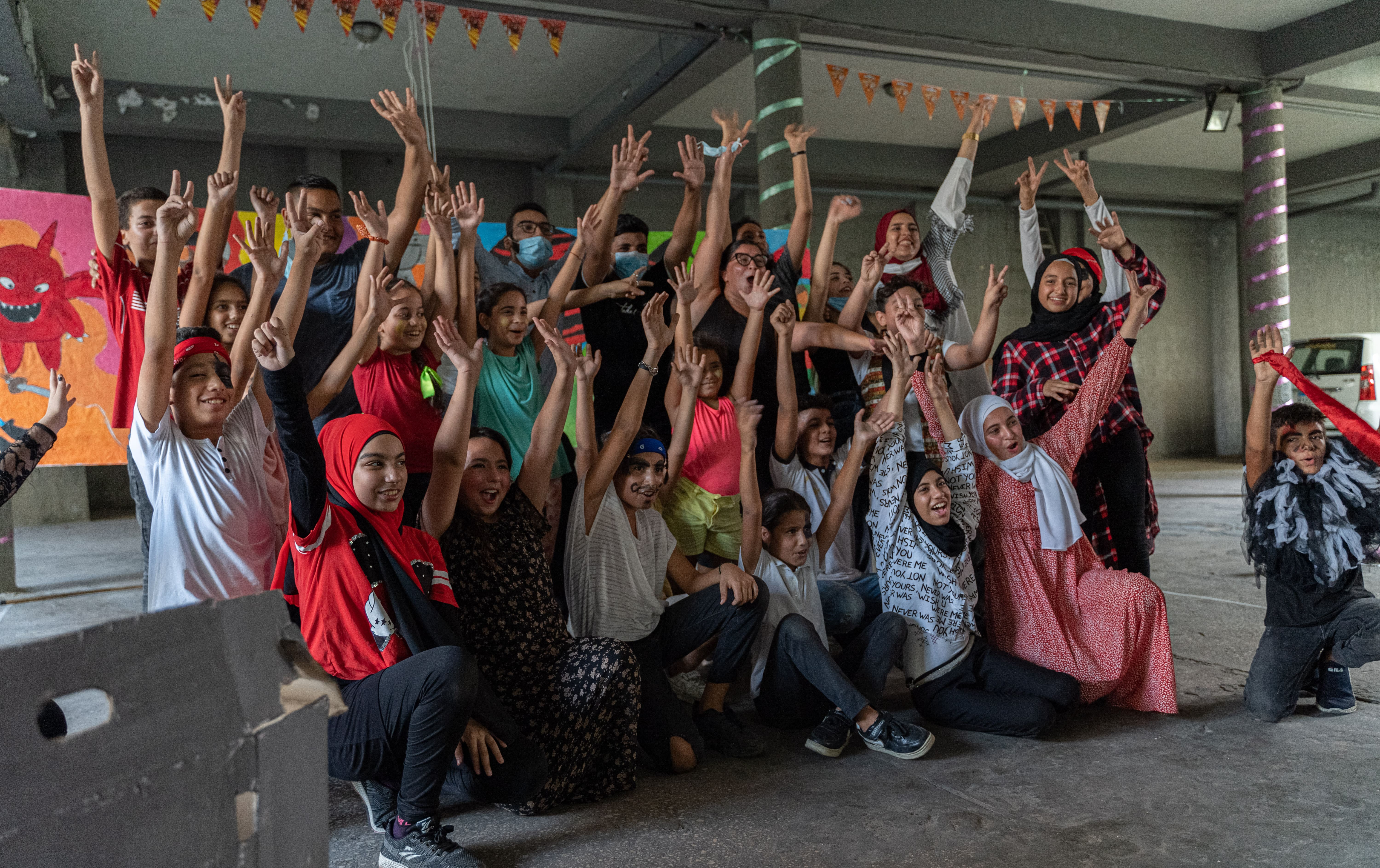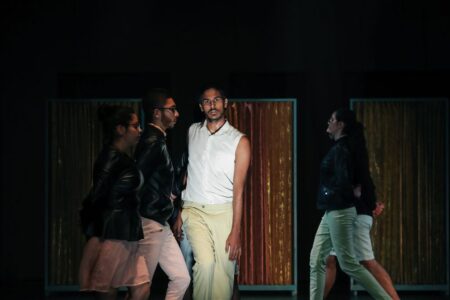
Topics
Music, Theater, and Collaboration: Creating Common Languages for Joy
Lama Amine, Head of Arts, Seenaryo in Lebanon; performer, director, teacher, and activist

A showbuild with children in Beirut, Lebanon. Photo: Ali Sheikh.

Seenaryo has been creating collaborative and imaginative community theater in Lebanon since 2015. We started working in Jordan in 2018, and we ran our first training in Palestine in 2022. While Seenaryo is first and foremost a theater organization, music has always played a big part in what we do.
Our participants are Lebanese, Jordanian, Syrian, Palestinian, Sudanese, Yemeni and Iraqi (to name a few), and they’re living in Palestinian and Syrian camps, orphanages, informal settlements, and young offender’s institutes. They each bring their unique background and heritage to our projects; every one of them has their own story to tell. Our participatory approach means that the participants are at the heart of the creative process, with a space to share their stories and the power to influence the journey of each play.
I have directed a number of Seenaryo productions, and we always use music in rehearsals. At the beginning of the process, I often have the ensemble sing together, to create a sense of harmony and remove any tensions between them. When people start singing, their bodies react to the music, and they feel joyful—and more free. I encourage them to make eye contact with each other as they sing, which allows them to connect with people they are meeting for the first time. It creates a new language they can use to communicate.

I try to incorporate musical scenes into all the plays I direct—and I encourage the ensemble to tell stories using their bodies in these scenes. I want the audience to be free to interpret these scenes in a way that is meaningful for them, rather than imposing a script on them. There’s a scene from a Seenaryo play I directed in Lebanon, called I See My Ghost Coming From Afar, in which one of the actors, Samer, is walking alone, in time to a repeating melody. He is surrounded by the rest of the ensemble, dressed in black suits. This scene can be interpreted in many different ways. After one performance, an audience member told me that they could really see themselves in Samer’s shoes. For them, the scene represented freedom, and they saw themselves as a person who wants to be free. Another audience member saw the scene as a representation of living in a heavily repressed society.
Before Covid, Seenaryo used to run choirs alongside our theater productions. The choirs brought together children from many different communities. Children love to sing; they find it easier to express themselves through music than through words. One of my favorite projects brought together over a hundred children from four different schools in Lebanon’s Bekaa Valley. They warmed up to each other by using their singing voices, and by the time the performance began, they were all competing to be the loudest singer.
The pandemic meant that we had to put our choirs on hold. But as we became more and more distant from our participants during lockdowns, we realized that music was still the most powerful way for us to connect. In the summer of 2020, we gathered hundreds of participants from Lebanon and Jordan to write an original song together, which led to the creation of a music video, Little Bird. I traveled with my colleague Victoria to all the participants’ homes, and we filmed them singing their parts of the song. They sang so freely in their own homes. Like birds, they all wanted their voices to be heard. We edited the clips together to create a video, and it went viral.
That music video, like all of our plays, was created in a collaborative way. Seenaryo’s stories always come from the participants, who find new ways to express themselves through music, movement, and theater. These new forms of expression allow them to express themselves in a pure way. They learn so much about themselves through singing, dancing, and acting, and this frees them to share their stories with others. We don’t ask them to act Shakespeare or Arthur Miller, or even Issam Mahfouz, because we would be limiting them if we asked them to perform a pre-existing text. When we allow them to create their own stories, they express things that they have never had the space to share before.

